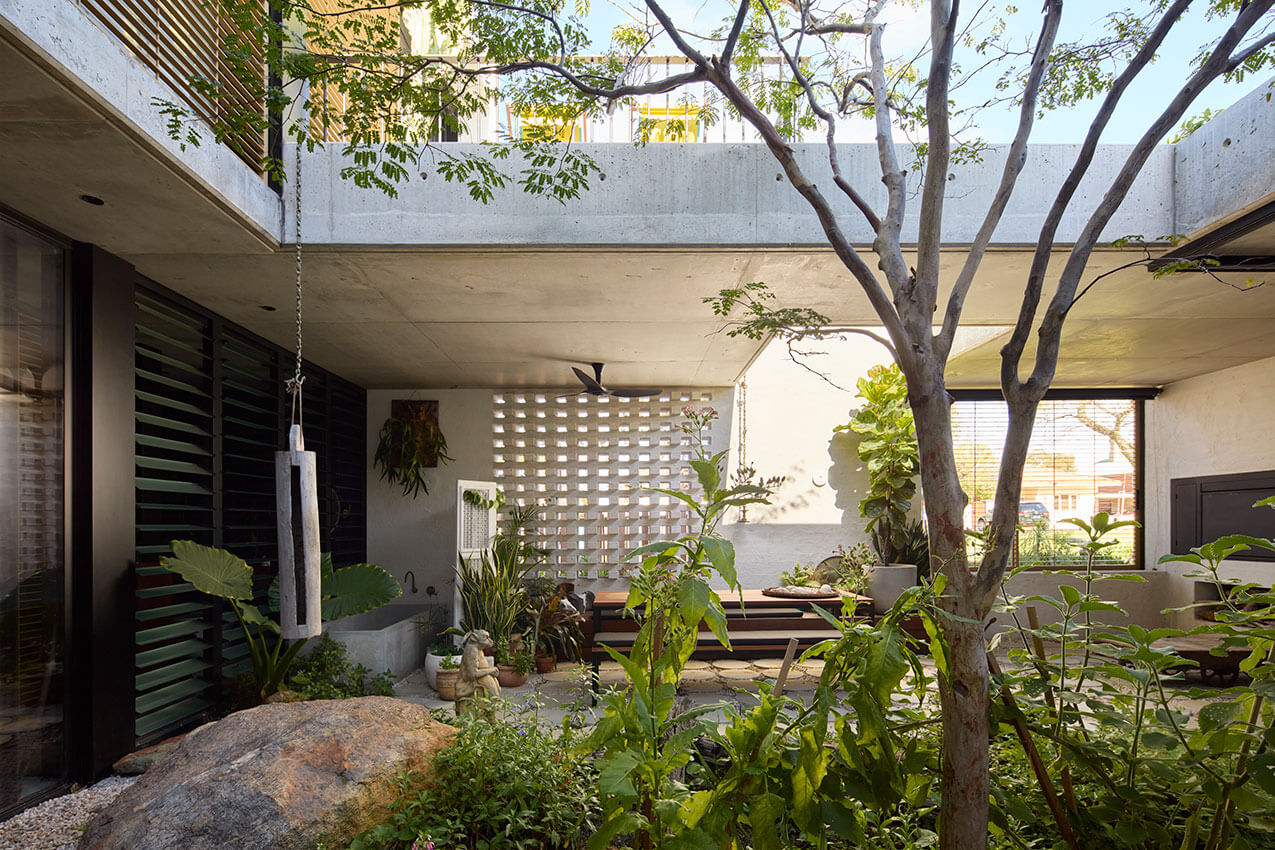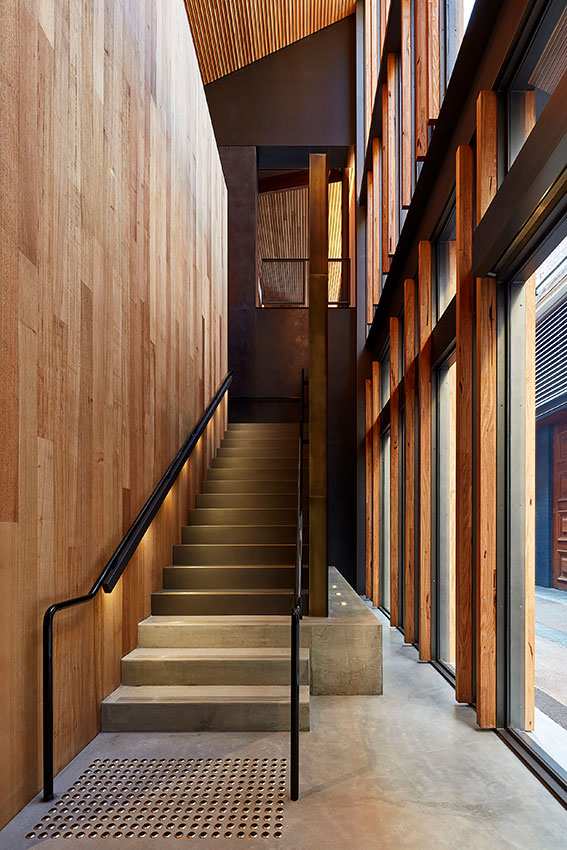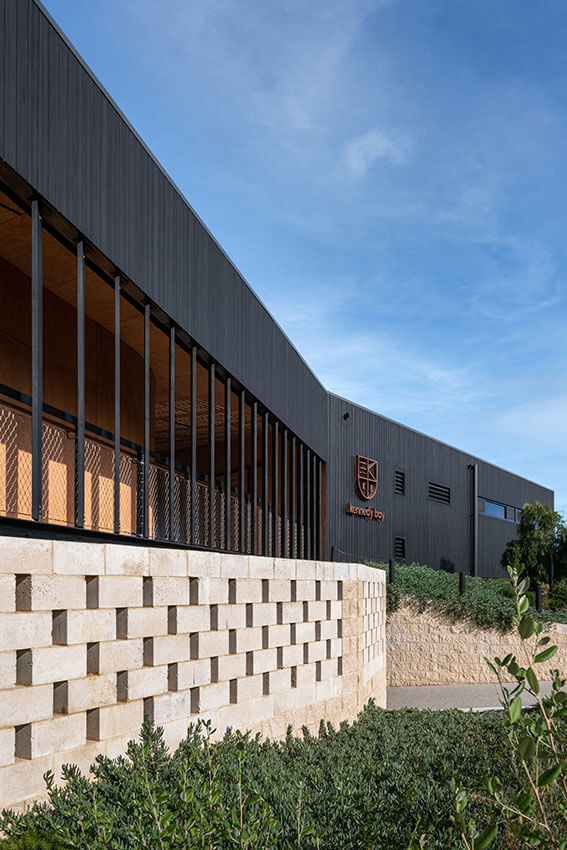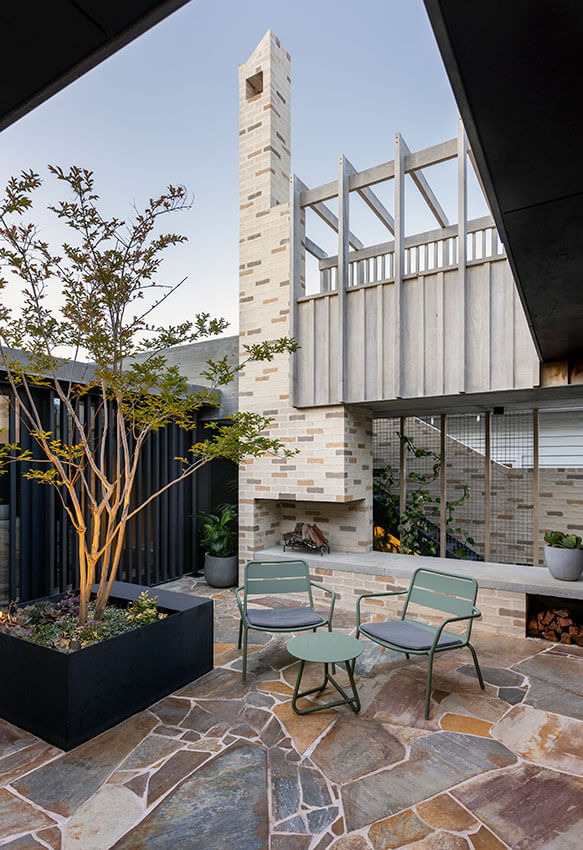History of the WA Chapter
and Past Presidents

History of the WA Chapter
WA Institutes of Architects
The West Australian Institute of Architects was first formed in May 1896, sixty seven years after the foundation of the Swan River settlement. Whilst early records indicate that earlier attempts were made to establish an Institute in 1887 and 1892, lack of subsequent evidence indicates that these attempts may if successful, have been short-lived.
A public announcement in The West Australian and subsequent reports provides definite proof that a general meeting of practising architects was held in the Criterion Hotel on the afternoon of 26 May 1896, with the express purpose of forming an Institute of Architects in Western Australia. At that meeting George Temple-Poole was elected as the first President, Michael Cavanagh as Vice-President, Clarence Wilkinson as the Honorary Secretary and Joseph Talbot Hobbs as the first Treasurer.
One of the reasons for the formation of a professional association may have been due to the rapid expansion of architects during the 1890s. According to J.M. Freeland, “in 1893, there were twelve private architects in Western Australia (nine in Perth and three in Fremantle). A year later there were eighty seven, and the next year, in 1897, a hundred and two architects were working in WA”
When the Institute applied for incorporation in 1902, the Government Gazette described the objectives of the Institute to be as follows:
“The cultivation of the Science and Art of Architecture, advancing, protecting and elevating the practice of it in its several branches, and encouraging intellectual and social discourse among the members.”
The Institute’s motto was Ad Altiora – “Towards higher things”
The first decades of the 20th Century saw the Institute gain recognition as the voice of the architectural profession in WA and the controlling authority on professional matters.
Between 1910 and 1916 the WAIA was responsible for promoting the need for formal town planning processes in Perth. Following the proclamation of the Housing & Town Planning Act in Britain in 1909, the Institute arranged for two representatives to attend a major planning conference held at the Royal Institute in London in October in 1910. Similar conferences were then held in Perth, and in 1911 George Temple-Poole and Hardwick both produced large scale planning schemes for Perth.
The visit to Perth in 1914 by William Davidge and Charles Reade of the Garden Cities and Town Planning Association of Great Britain did much to progress the public debate on this issue and ultimately led to the formation of the W.A. Town Planning Association in March 1918.


In July 1921, additional recognition was accorded to the WAIA when the Governor proclaimed that the King had given permission for the association to be known forthwith as the Royal Institute of Architects of Western Australia (RIAWA).
Later that year (1921), after two years of discussions facilitated by the Institute, legislation was introduced into State Parliament to register architects in Western Australia. On 31 January 1922, WA led the way by being the first State to formally register architects, when the Architects Act of Western Australia 1921 was proclaimed.
During the later part of the 1920s discussions were held with the Institutes of Architects in other States regarding the need for a national Institute to be formed. However, due to the general lack of enthusiasm exhibited in WA for federation, Western Australia declined an invitation to become one of the founding partners of the Royal Australian Institute of Architects when it was formally created in 1930. Instead formal links were established with the Royal Institute of British Architects (RIBA) in London.
While discussions continued regarding the merits of joining a national institute, the Royal Institute of Architects of Western Australia (RIAWA) continued to prosper with 1939 witnessing the first publication of it’s own magazine The Architect and the appointment of it’s first paid (although part-time) Institute administrator, when E.G. Sier was appointed in June 1939. The close connection with the Architects Board of Western Australia also dates from this time, with Sier undertaking the role of part-time administrator for the RIAWA and part-time registrar for the Board during the period 1939 to 1967.
With the support of the RIAWA, 1939 also witnessed the promulgation of the Builders Registration Act and the creation of the Builders’ Registration Board during the following year. Paddy Clare held the position of Chairman of the Board from it’s inception in 1940 until 1971.
However, the outbreak of World War II had a major impact on West Australians, the architectural profession and RIAWA. Unlike the situation during World War I, when the profession and the Institute had continued to function more or less normally, the effects of the 1939-1945 conflict were significant and severe. By the end of 1942, it was claimed that 90% of all architects were directly involved in the war effort.
With the profession facing the serious challenges of war and few members available to attend to Institute matters, it was informally agreed that future debate about amalgamation with the RAIA should be set aside until the end of the war. However, while in Sydney on war related work during June 1942, Harold Boas (Vice-President of the RIAWA) took the opportunity to discuss amalgamation with Professor Hook, the indefatigable secretary of the RAIA. Both men were confident that the difficulties standing in the way of amalgamation could be resolved.
Seizing the moment, Harold Boas wrote to RIAWA President A.E. Clare recommending that RIAWA should join forces with the RAIA as soon as possible. Following consideration by the RIAWA Council, a decision was taken later that year to submit a formal application for all members of the RIAWA to form the WA Chapter of the RAIA. Following approval of this proposal by the Council of the RAIA, the terms of the agreement were forwarded to Perth and considered at a special meeting of the RIAWA Council on 5 January 1943 and at a special general meeting of members on the next day.
With their agreement, the Council was authorised to proceed with the merger of the RIAWA with the RAIA. The public announcement of the formation of the WA Chapter of the RAIA appeared in the March 1943 edition of The Architect. At the first meeting of the new Chapter, A.E. Clare’s efforts in guiding the merger to a successful conclusion were acknowledged by his election as the first President of the W.A. Chapter.
With the merger (and the end of the war) came a change in focus with local practices, local standards, even local values and priorities now being measured against national norms and national policies. The impact of these changes are still being felt today, as the architectural profession adjusts to progressive changes in the adoption of national standards and the emergence of a national market for architectural services.
A detailed history of the Institutes of Architecture in WA titled High Hopes has been compiled by Duncan Richards and is available from the WA Chapter of the Australian Institute of Architects at 33 Broadway. Contact us for a copy.

Presidents of the WA Institutes of Architects
Royal Australian Institute of Architects, WA Chapter (RAIA - WA)
| 2021 – current | Sandy Michelle Anghie |
| 2019 – 2021 | Peter Charles Athol Hobbs |
| 2017 – 2019 | Suzanne Jane Hunt |
| 2014 – 2017 | Philip John Griffiths |
| 2011 – 2014 | David John Knox Karotkin |
| 2007 – 2011 | Rodney David Mollett |
| 2005 – 2007 | Ian Henry Dewar |
| 2004 – 2005 | Patrick Maurice Pinder |
| 2001 – 2004 | Warren Merton Kerr |
| 1999 – 2001 | Haralds Gunter (Harry) Schubert |
| 1997 – 1998 | Nigel Warren Shaw |
| 1995 – 1996 | Geoffrey Leslie London |
| 1993 – 1994 | Gregory Francis Hamilton Howlett |
| 1991 – 1992 | Peter Shaw Parkinson |
| 1989 – 1990 | Brian Frederic Charles Wright |
| 1987 – 1988 | James Taylor |
| 1985 – 1986 | Max Rodney Hardman |
| 1983 – 1984 | Laurie William Hegvold |
| 1981 – 1982 | Ronald Barrie Bodycoat |
| 1979 – 1980 | John A Pickering |
| 1977 – 1978 | Antonio Carmelo (Tony) De Leo |
| 1975 – 1976 | Peter John Grigg |
| 1973 – 1974 | John Kenneth Duncan |
| 1971 – 1972 | Eustace Gresley Cohen |
| 1969 – 1970 | Richard Morris Fairbrother |
| 1967 – 1968 | Geoffrey Edwin Summerhayes |
| 1965 – 1966 | Gordon William Finn |
| 1963 – 1964 | William Thomas Leighton |
| 1961 – 1962 | Mervyn Henry Parry |
| 1959 – 1960 | Desmond Ossiter Sands |
| 1957 – 1958 | Marshall Waller Gervase Clifton |
| 1955 – 1956 | Kenneth Charles Duncan |
| 1953 – 1954 | Oswald Victor Chisholm |
| 1951 – 1952 | William Thomas Leighton |
| 1949 – 1950 | John Berkeley Fitzhardinge |
| 1947 – 1948 | William Allan Mclnnes Green |
| 1945 – 1946 | Alexander Barr Winning |
| 1943 – 1944 | Albert Ernest (Paddy) Clare |
Royal Institute of Architects of Western Australia (RIAWA)
| 1942 – 1943 | Albert Ernest (Paddy) Clare |
| 1940 – 1941 | George Herbert Parry |
| 1939 – 1940 | Kenneth Charles Duncan |
| 1937 – 1938 | Reginald Summerhayes |
| 1935 – 1936 | Alexander Donald Cameron |
| 1933 – 1934 | Walter James Waldie Forbes |
| 1932 – 1933 | Joseph Francis Allen |
| 1930 – 1931 | Edgar Le Blond Henderson |
| 1928 – 1929 | Joseph Francis Allen |
| 1926 – 1927 | Alfred Robert Linus Wright |
| 1924 – 1925 | Eustace Gresley Cohen |
| 1923 – 1924 | Alfred Robert Linus Wright |
| 1922 – 1923 | Jack Learmonth Ochiltree |
| 1921 – 1922 | Alfred Robert Linus Wright |
West Australian Institute of Architects (WAIA)
| 1919 – 1921 | Alfred Robert Linus Wright |
| 1917 – 1919 | Joseph Herbert Eales |
| 1915 – 1917 | Michael Francis Cavanagh |
| 1913 – 1915 | George Thomas Temple Poole |
| 1911 – 1913 | Percy William Harrison |
| 1909 – 1911 | Joseph John Talbot Hobbs |
| 1907 – 1909 | Percy William Harrison |
| 1905 – 1907 | George Thomas Temple Poole |
| 1903 – 1905 | Michael Francis Cavanagh |
| 1896 – 1903 | George Thomas Temple Poole |
